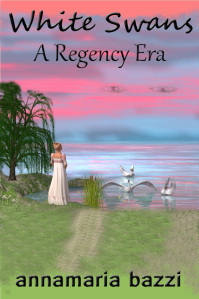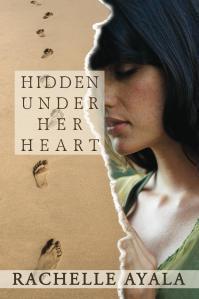P.C. Zick's Blog, page 50
March 18, 2013
Write First, Write Great
By Patricia Zick @PCZick
As I read about how successfully to market my books, I keep coming back to one word of advice: WRITE. To make a name for myself as a writer, I must always remember to keep writing. When I look at my discouraging book sales, instead of hanging my head, I must keep my fingers flying over the keyboard.
And when I write, I must write great stuff. Or at least, I must write pieces that satisfy me. It’s always true that as writers we must determine who the audience is, but that can be carried too far if we forget our No. 1 audience is the person cranking out the words.
For so long, I wrote with far too much focus on audience. When I worked as a journalist who depended on a paycheck, it was essential. When I worked for a state agency as a public relations director, there was no choice but to write for everyone but myself. But as a novelist and blogger, I am freed from some of those constraints.

By Jae at Lit and Scribbles
When I published my first novel in 2000, I think I expected instant success. The day I sat in a bookstore next to a life-size poster of Harry Potter the same year J.K. Rowling became a household name and sold one book during a two-hour signing, I realized success was not knocking anywhere near my door. I wrote more novels, always chasing that nebulous dream of “success” and writing for that and not myself. I didn’t know what success meant, except as described by others.
“Send the book to Oprah,” friends said.
I did send five books of that first book to Oprah and her producers. That’s the last time I wasted my money so foolishly – even more foolish than playing $20 on a slot machine at the casino.
I gave up on publishing in 2007 and became a cynic about my chances for success as an author. I still wrote fiction, but put a first draft away in a drawer and actually finished another novel all the way through the editing process. Then I put it away in a drawer. And I continued to write for other people in a stilted, non-creative way. If you’ve ever had to write a news release in less than an hour with four scientists and the director of a state agency breathing down your back and shouting edits as you type, you’ll never understand how my creativity left me for a few years. It’s not recommended, unless you treat the job as a research position for your next novel – which I did. Trails in the Sand is the result of that internship. My next novel uses some of my research time as well. I probably have ten novels inside me based on that experience.
I’ve changed as I’ve moved into this new phase of my writing career. I’m no longer working for a paycheck. I’m working for myself. It’s been a strange transition, not always a comfortable one, but I’m growing into it.
I realized how far I’d come when I finished the final edits on Trails in the Sand. I read the last paragraph of the book and found myself crying. The story moved me. I realized in that moment, nothing else mattered. It didn’t matter what the reviewers said or if I became an overnight sensation or if I sold more than a dozen books. In that moment, I was as successful as any author can ever be. I pleased myself with my writing and knew that I’d written the book I wanted to write.
That profound moment forced me to make some changes in my day. Instead of writing at the end of the day after marketing and dealing with social media, it’s now the first thing I do. Writing takes precedence over everything else because above it all, I am a writer.
So write first and for yourself, and I promise you, the writing will make you proud.


March 15, 2013
Book Review Friday – In the Time of the Butterflies
Book Description from Amazon: It is November 25, 1960, and three beautiful sisters have been found near their wrecked Jeep at the bottom of a 150-foot cliff on the north coast of the Dominican Republic. The official state newspaper reports their deaths as accidental. It does not mention that a fourth sister lives. Nor does it explain that the sisters were among the leading opponents of Gen. Rafael Leonidas Trujillo’s dictatorship. It doesn’t have to. Everybody knows of Las Mariposas—“The Butterflies.”
In this extraordinary novel, the voices of all four sisters—Minerva, Patria, María Teresa, and the survivor, Dedé—speak across the decades to tell their own stories, from hair ribbons and secret crushes to gunrunning and prison torture, and to describe the everyday horrors of life under Trujillo’s rule. Through the art and magic of Julia Alvarez’s imagination, the martyred Butterflies live again in this novel of courage and love, and the human cost of political oppression.
My Review: Julia Alvarez weaves fact with fiction to create a novel that offers one view of life under a cruel leader, and she shows the courage it takes to stand up in the face of dictatorship. In the Time of the Butterflies mesmerized me from the first chapter, as told through the fictional voice of the only surviving sister, Dede. Each chapter takes on the voice of all four sisters in a way imagined by Alvarez as she researched the lives of the Mirabel sisters, known as the butterflies.
I was unaware of the history of the Dominican Republic until I read this novel. Of course, I’d heard of Trujillo and his regime, but I’m not sure I even knew which country he ruled. The period portrayed in the novel, 1938-1960, follows the life of the Mirabal sisters. Alvarez creates a fictional life for the characters that she says took her over the more she researched. Alvarez, born in New York City in 1950, was raised in the Dominican Republic for the first ten years of her life as her family supported the overthrow of the Trujillo regime. Four months before the death of the sisters, her family fled back to the United States. She knows of what she writes, and it’s not surprising a ten-year-old girl would romanticize and fantasize about the lives of female heroes in a cause supported by her own parents.
The result is the novel In the Time of the Butterflies, published in 1994. How did I miss reading this? I read her first and probably more widely known novel, How the Garcia Girls Lost Their Accents, published in 1991.
I’m glad I found it. I bought it last year from a bargain bin at Barnes and Noble, simply because I recognized the author’s name. It remained on my bookshelves for almost a year. Once I picked it up, I seldom put in down in the two or three days it took to read.
As a writer, I found the concept of taking real people and real events and giving them fictional dialogue, emotions, and actions, intriguing. Alvarez tells Dede’s story in third person. Dede, the second-born Mirabel sister, is the only to survive because she didn’t travel with her sisters on that November day in 1960. It’s a good choice, even though I questioned it at first. As the novel evolves, it becomes clear that Dede remained removed from the sisters in ideology and character, so it’s appropriate her story is told from a more detached point of view. Dede never really entered into the activities of the butterflies, and often objected to her sisters’ participation in the revolutionary activities, despite her love and loyalty to her family. It is Dede who’s left to raise the children of her siblings after Patria, Minerva, and Mate are found murdered on the side of a road.
Minerva’s story is told in the form of a diary, which is helpful in understanding how she became the first sister to begin to question the government. Throughout the story, she’s also the most radical of the four. Patria, the eldest sister, attempts to cling to her religion through personal tragedies and outside forces through her first-person narrative. The entries of Mate show the brilliance of the author when she begins with Mate’s chapters with immature, girlish diary entries written as a nine-year old. The entries show the maturing of a young woman, and perhaps Alvarez relates to this character the most since she begins her entry into the story near the same age Alvarez was when she and her family fled the country.
Patria’s story touched me the most. She struggled with her faith as she faced the loss of a baby and faced the fear of losing her first-born, a son determined to join the fight against Trujillo. One chapter, “January to March 1960” in particular, struck me. It begins, “I don’t know how it happened that my cross became bearable.” Her husband was imprisoned; her home had been taken over by the government, yet she found hope in that setting by praying to the mandated photo of Trujillo in the hallway of her mother’s home. She didn’t pray to him because “he was worthy or anything like that. I wanted something from him and prayer was the only way I knew to ask.” Patria says she learned the trick from raising children. “You dress them in their best clothes, and they behave their best to match them.” She hoped to turn the regime around by praying to his “better nature.” Through this simple prayer, created in the fictional lives of the women, Alvarez gives the reader a lesson on life.
Even though I knew how the novel would end because of the real historical facts, I was still mesmerized by the story as I read the account of the final days and moments in the lives of Patria, Minerva, and Mate.
It’s the same reason the ancient Greeks attended the same plays over and over again by the few playwrights of the day. They knew the story; they knew the ending; but they didn’t know how the elements within each production would be presented. A classic story withstands its retelling only if the artistic rendering is unique and suspenseful in the hands of a talented writer.
Alvarez qualifies with this rendering of the story of the las mariposas (the butterflies) of the Dominican Republic.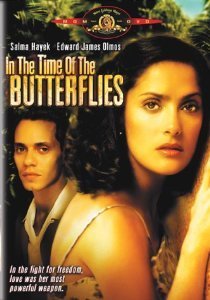
Next, I’ll watch the movie of the same name, starring Selma Hayek as Minerva.
See my post Weaving Real Events into Fiction.


March 13, 2013
Free March 13, 14 and Giveaway
Live from the Road can be downloaded for FREE March 13 and 14. If you haven’t had a chance to read it yet, here’s your chance. Click on the title or on the photo image below, and you’ll be taken right to Amazon.
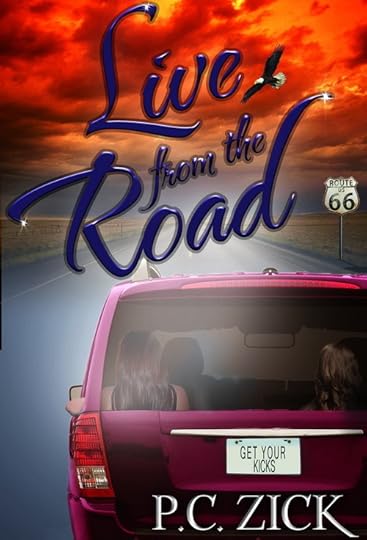
FREE March 13, 14
Trails in the Sand feels a little left out, so I’m offering a free eBook March 13 and 14 to a randomly chosen commenter on this post for my new novel, Trails in the Sand.

Giveaway on March 13 and 14 – comment randomly chosen each day


Author Wednesday – Annamaria Bazzi
 Welcome to Author Wednesday on Writing Whims. Today, Annamaria Bazzi stopped by for an interview with two characters from her novel White Swans: A Regency Era, the first book in a series about an orphan who cries herself to sleep and only to awake in a Regency castle.
Welcome to Author Wednesday on Writing Whims. Today, Annamaria Bazzi stopped by for an interview with two characters from her novel White Swans: A Regency Era, the first book in a series about an orphan who cries herself to sleep and only to awake in a Regency castle.
Patricia: Welcome to Writing Whims today, Annamaria. I understand you’ve brought two of your character creations with you for this interview.
Annamaria: Hello, Patricia. Thank you so much for having us over. I would like to introduce you and your readers to Kendíka and Saphora. Although I must admit, I’ve never seen Saphora, but she wouldn’t let Kendíka come without her.
Patricia: How did you meet Kendíka and Saphora and how long ago was it?
Annamaria: I met Kendíka a few years ago, but unsure of what her story was, I left her in her bedroom, or her prison, as she calls it. I remember she always sat near the window gazing at the three white swans swimming in the lake. I had no idea what to do with her at the time, so I filed her away in my mind. About a year ago, she decided to open up and tell me her strange story, which I wrote down word for . . .
Kendíka: That’s a lie; she made the story up.
Annamaria: Please don’t interrupt; I’m sure you’ll have plenty of time to give your version of the events. Now, Saphora sort of popped into the story out of the blues . . .
Kendíka: I think you have a very twisted mind. What is it with you and turning people into birds? It’s a real strange fetish.
Annamaria: Be thankful you’re still human.
Saphora: Wait a minute! I thought I was the one turning people into birds – swans, to be precise.
Kendíka: How many pets do you have?
Saphora: That’s not important . . .
Annamaria: Excuse me! Are you telling me you have more than one pet?
Saphora: It’s a possibility.
Annamaria: Wait a minute! I thought I was the author making all the rules.
Saphora: Yeah right! Haven’t you heard that the characters drive the story? You, Annamaria, are only the instrument for writing the words in the word processor. (Saphora laughs.)
Annamaria: I don’t think that’s funny. First off, you are my creation.
Saphora: As I recall, you created Kendíka, I popped into the story, and boy, were you surprised when I did, and you’re still in the dark about my character and what I look like. If I choose never to reveal those things, you will never know me. The mystery will kill you. After all, you are the most curious human I’ve met thus far.
Annamaria: I don’t like where this is going.
Saphora: Are you admitting defeat?
Annamaria: Never.
Patricia: Before this gets out of hand, Kendíka, can you tell us what you think of Annamaria?
Kendíka: She’s a bit demented with a fixation on birds. I think she lost her heart a long time ago.
Patricia: What makes you say such a thing?
Kendíka: Why else would she change people into swans?
Annamaria: This idea unfortunately isn’t new; Swan Lake by Tchaikovsky comes to mind and the Swan Princess, a cartoon animation adapted from the ballet.
Kendíka: OK, now you’re getting boring. (Kendika rolls her eyes)
Saphora: We are gracing this blog as guests, and I suggest we stop arguing and behave; if not, I have the power to turn you both into swans. I don’t think our host would appreciate such an event taking place on her blog.
(Kendíka bows her head and turns quiet.)
Annamaria: I have more power than you can ever imagine, so I suggest you start to behave. I’m the creator and can definitely erase you from existence.
Saphora: Go ahead, I’ll allow you to believe it, but if you attempt to erase me, you’ll have no story.
Patricia: Kendíka, if you could say one thing to Annamaria, what would it be?
Kendíka: Annamaria, you’re a crazy woman.
Patricia: What about you, Saphora, what would you tell her?
Saphora: To be careful because characters have more power than she’ll ever imagine. Beware, Annamaria.
Patricia: Do you think you’ll all meet again?
Annamaria: Naturally, since White Swans is a series, we’ll be spending a great deal of time together, and in the next book, a new character will waltz into the series.
Kendíka: Oh boy, can’t wait! (she makes goo-goo eyes at Annamaria)
Annamaria: Before we overstay our welcome . . .
Kendíka: (frowns) Are you implying we’re being disrespectful?
Annamaria: Never, just rambunctious. As I was saying, I would like to thank you so much for giving us the opportunity to talk to your readers. Hopefully, we haven’t made too bad of an impression.
Patricia: I’m happy you stopped by. I’ve never hosted anything quite like it. I bet my readers are curious about these two characters.
 About Annamaria Bazzi – Although born in the United States, Annamaria Bazzi spent a great deal of her childhood in Sicily, Italy, in a town called Sciacca. Italian was the language spoken at home. Therefore, she had no problems when she found herself growing up in a strange country.
About Annamaria Bazzi – Although born in the United States, Annamaria Bazzi spent a great deal of her childhood in Sicily, Italy, in a town called Sciacca. Italian was the language spoken at home. Therefore, she had no problems when she found herself growing up in a strange country.
Upon returning to the states, she promised herself she would speak without an accent.
She attended Wayne State University in Detroit, Michigan, where she obtained her Bachelor of Science degree in computers with a minor in Spanish.
Annamaria spent twenty years programming systems for large corporations, creating innovative solutions, and addressing customer problems. During those years, she raised four daughters and one husband. Annamaria lives in Richmond, Virginia, with her small family where she now dedicates a good part of her day to writing.
Links to Annamaria’s books on Amazon: White Swans, A Simple Matter of Justice, and Revelation of Abaddon
A Simple Matter of Justice is also available on Barnes and Noble and Smashwords.
Revelation of Abaddon is also available on Barnes and Noble and Smashwords.
Annamaria Contact Information:
Email: annamariascorner@yahoo.com
Twitter: https://twitter.com/AMBazzi
March 11, 2013
Weaving Real Events into Fiction

Macondo well gushes oil after Deepwater Horizon oil rig burns and falls
When I began the early scribbles for what eventually became Trails in the Sand, I was writing about current events. BP’s Deepwater Horizon oil spill still led the headlines as oil gushed unabated into the Gulf of Mexico. Massey Energy’s Upper Big Branch mine explosion made headlines in few months after the explosion when investigators finally entered the mind shaft after the fumes subsided. The CEOs of both BP and Massey continued in their positions, but only for a few months longer.
I used both events in my novel as the main characters are connected to both disasters.
By the time, I published Trails in the Sand in January 2013, the horror of both events faded from the public consciousness as the media turned to more pressing issues, such as the demise of yet another pop idol with little talent, except a beautiful face and body.
BP plays its commercials extolling the beauty of the Gulf beaches it nearly destroyed forever because of their negligence in following safety procedures. Massey Energy changed names, and the face of the company, Don Blankenship, faded into obscurity except for his website supporting certain political entities.
So my novel went from the category of current events to historical fiction in less than three years.
Even though I used real events in the novel, my characters are figments of my imagination. I used actual news accounts and placed my fictional characters into the scenes. It’s reminiscent of the movie Forest Gump, except our dear Forest goes to the top and interacts with very real presidents during very real events. My characters do more mundane things.
Some authors use actual events in history with real people. They invent conversations, emotions, and action within the context of the history. Paula McLain did that very well in The Paris Wife, a novel about Ernest Hemingway and his first wife Hadley. Using Hemingway’s Moveable Feast, McLain creates conversations and events between the characters. She read Hadley’s letters to Ernest to find the woman’s voice. “I invented what I couldn’t know,” McLain said.
Another novel that skillfully invents the lives of real characters and real historical events is Julia Alvarez’s In the Time of Butterflies. It takes place in the Dominican Republic during the rule of Gen. Rafael Leonidas Trujillo’s dictatorship. Four sisters – the Butterflies – are the main characters of the novel and the real Butterflies during that violent time. On November 25, 1960, three of the sisters are found dead next to their jeep. The other sister, Dede, remained at home. Alverez tells the story from the viewpoint of all four sisters capturing their voice and personality through very adept storytelling.
Even though authors may choose different ways to include historical events within the confines of a story, some things remain constant.
Research – If you decide to include real historical events or real places within your fiction, accuracy is crucial. In Trails in the Sand, I used real news releases, news articles and reports, and books on the events. For the mine explosion, I added a fictional miner, but I kept to the real details of lawsuits and monetary settlements offered by the company to the victims’ families based on news reports. McLean used the Hemingways’ real accounts of their lives together in Paris. Her descriptions of Paris in the 1920s is historically correct.
Always Avoid Libeling a Real Person – There’s a standard for libel, which includes making defamatory statements of fact that are false. If you decide to use real people in your fiction, use common sense and only write what you can prove. For instance, if I quoted a real person in Trails in the Sand, the quote came from an interview using that person’s real words. My best advice to you, if writing about a real person and making them a character in a novel, is not to defame them and stick to actual historical accounts. In addition, make sure you publish a disclaimer at the front of your book. Here’s a sample used by many authors and publishers:
This is a work of fiction. The characters, events, and dialogues portrayed in this book are products of the author’s imagination and are not to be construed as real.
Keep track of current events – As authors, we never know when a story in the newspaper might end up in a book. If something tickles your fancy, bookmark it, save a copy of the article, and/or scribble some notes about it. Soon it will be history and might be stranger and wilder than anything you could ever imagine. Something I read years ago has stuck with me. A man in Florida, shot his pit bull when the dog showed signs of homosexuality. His neighbors reported the gunshots, and the man claimed he couldn’t stand to have a “gay dog” on his property. I’ve weaved that into my next novel – I just knew it would come in handy one day.
Have you ever used real events in a novel? Do you like reading novels that do?


March 8, 2013
Book Review Friday – Hidden Under Her Heart by Rachelle Ayala
[image error]By Patricia Zick @PCZick
Hidden Under Her Heart by Rachelle Ayala takes the reader up and down the emotional scales in the lives of Maryanne and Lucas. From their first meeting, the ride begins when Lucas plays a ridiculously immature prank on Maryanne who’s on duty in her job as a nurse. Maryanne is equally immature in her vow to remain celibate until she finds the right man, but then when she and Lucas go on their first date, she teases, flirts, and makes it seem as if she’d like more. As the story moves forward, the reader learns that all she wants is to be loved. She also needs to find peace with her past. When confronted with a life-altering decision, she finally starts to grow into her skin.
As the book proceeds, choices made by both Lucas and Maryanne force them to grow up and face their demons as well as the reality of grown-up lives faced with grown-up decisions. Their past catches up to both of them. It’s often said that it’s not what we have to deal with, but how we deal with the what is presented to us either based on our own decisions or the decision forced on us by others.
I admit I wasn’t sure I’d like this book because of its pro-life bent, but I decided to give it a chance because I’d read and enjoyed Michal’s Window by Ms. Ayala, which is the story of King David and his first wife, Michal. The Biblical story was intriguing as well as sensual. The premise for Hidden Under her Heart also sounded interesting. As a pro-choice woman, I found the book an interesting study of the choices we make when life hands us rotten eggs.
The author does not shout her beliefs, which allowed me to continue the story. She merely shows through her characters that when it comes to pregnancy, adoption, abortion, and parenthood, consequences ensue, which means the choices require extreme consideration and soul searching.
Subtle religious overtones emerge throughout the book; yet again, there was no shouting. I’m a spiritualist, open to many religions, even though I was raised Christian. The religious aspects of this book only confirmed my own belief that faith in God helps us through the worst of times.
I give Hidden Under Her Heart five stars for its honesty. I also give Ms. Ayala five stars for her bravery in writing a story on a controversial subject in such a thoughtful and considerate way. Our discourse on divisive topics should always remain as civil as it does in this novel. I may believe differently than Ms. Ayala, but with her prose, she made me pause and think. If only we could all get back to this type of discourse in this country, we’d be able to solve a bundle of problems facing us today. Thank you, Ms Ayala, for helping confirm my own beliefs on not shouting our opinions through writing.
What other books have you read that put forth opinions without shouting?
See interview with Rachelle Ayala on Writing Whims


March 6, 2013
Author Wednesday – Rachelle Ayala
 Welcome to the very first Author Wednesday on Writing Whims. I am very pleased to introduce Rachelle Ayala, author of Michal’s Window, Broken Build, and her latest release, Hidden Under Her Heart. Rachelle was kind enough to answer a few questions about her new book and about herself as a writer and a person.
Welcome to the very first Author Wednesday on Writing Whims. I am very pleased to introduce Rachelle Ayala, author of Michal’s Window, Broken Build, and her latest release, Hidden Under Her Heart. Rachelle was kind enough to answer a few questions about her new book and about herself as a writer and a person.
Good morning, Rachelle, and welcome to Writing Whims. Please tell me about Hidden Under Her Heart. Who or what was your inspiration behind it?
Hidden Under Her Heart is a heartfelt novel written to examine abortion, post-abortion guilt, and the unborn baby’s right to life. I was inspired by my friend, Melisa Hamling, who is the author of Twenty Weeks, another story dealing with abortion. Matt Patterson, author of My Emily, provided encouragement for me to look into my own experiences to shape and craft this story into an uplifting one with a happy ending.
What are some of your favorite genres to read and to write?
I love dramatic fiction with heavy emotional overtones centered around women coping with big problems in their lives. My favorite authors are Anne Rivers Siddons, Melissa Foster, and Mary M. Forbes. Their books take you into the harrowing lives of women facing huge challenges with unexpected twists and heartrending emotions. I like to be surprised and not see things coming a mile away or feel like the author is steering me in a particular direction. So the problems have to be gigantic, the characters mucho flawed, and the dilemmas in conflict with horrid villains.
What has been the toughest criticism given to you as an author? What was the biggest compliment? Did those change how or what you did in your next novel?
My stories reflect me, and not some vague genre-specific market segment. I’m a born-again Christian after age forty; I lived in a rough neighborhood growing up; I spent a lifetime in computers and the tech industry; I don’t have the cleanest vocabulary, but I read my Bible from cover to cover; and I have a vivid imagination. My books include characters who are Christian as well as ones who are not, but the overall message is uplifting and someone gets saved in each of my books. Ironically, the worst criticism comes from Christians. All they see are the cuss words and sex and not the theme about brokenness, redemption, healing, changing lives, and finding God.
My biggest compliments come from readers who write me and tell me how my book impacted them, even if it was to keep them from sleeping. Michal’s Window got people to empathize with a strong woman who was suppressed by her time in history. [image error][image error]Broken Build deals with grief over violent crimes and shows the power of forgiveness.
Since I published Hidden Under Her Heart, many have shared with me their personal stories, or those of their friends and relatives. My story is compassionate and shows how people who are burdened under layers of guilt can find peace.
Have I changed anything? I’d be lying to say I haven’t. Hidden Under Her Heart has no overt sex scene. Sorry to disappoint everyone, but it is safe for mature teens. It also has no Bible verses, the other objection from Christian readers who did not like Bible verses next to cuss words. Oh, and my main character does not cuss, not that I can remember.
What is your favorite junk food vice?
Dark chocolate: Lindor extra dark truffles, Guittard’s semi-sweet chocolate chips, Lady Godiva’s. Anyone want to send me some, I’ll be your best friend.
I didn’t realize chocolate was a vice, especially dark chocolate! We all have our little things when it comes to reading, is there anything that bugs you when you read a novel? What is it?
The number one thing that bugs me is author manipulation. I can tell if an author tries too hard to get me to like a character. Everyone praises that character, says how good looking she is, how sensible, how wise. The character also has a high fallutin’ sense of her own that adds to the misery. I hate lame stories where the male hero is too perfect, or only has one tiny flaw, which is minor. And mostly, I don’t like it when the story lacks conflict, glosses over detail, and explains away complications. Even worse is when I identify with the character we are all supposed to hate. Ha, then, I start wishing bad things would happen to the supposed good character and am ultimately disappointed when the story ends.
Who was your current novel dedicated to? Any particular reason?
Hidden Under Her Heart is dedicated to my son, Ross, who was born at 26 weeks gestational age and lived three weeks in the NICU. I have an important message in my book about the sanctity of life, no matter how small or maimed, and I wanted to give Ross’s short life meaning. He would have been a senior in high school this year and applying to college. This is my way of sending him into the world, on the wings of my book.
That’s lovely, Rachelle. I’m sure he’s flying safely. Is there anything else that you would like to share or say to those who will read this interview?
First of all, thank you for reading this far! And mostly, be yourself and accept yourself the way God made you. I truly enjoy hearing from readers and hope my stories inspire you and make you feel good about yourself. God bless you, and thank you, Patricia, for letting me visit with your readers.
You’re very welcome, Rachelle. It’s been a pleasure to get to know you a little better.
About Rachelle Ayala writes dramatic fiction crossing genres and boundaries, featuring strong but flawed characters. She writes emotionally challenging stories and is not afraid of controversial topics. However, she is an optimist and laces her stories with romance and hope.
Rachelle is currently working on a romantic suspense that touches on disability. She is a very happy woman and lives in California with her husband. She has three children and has taught violin and made mountain dulcimers.
Links to Rachelle’s books: Michal’s Window Broken Build Hidden Under Her Heart
Website: http://rachelleayala.me
Blog: http://rachelleayala.com
Twitter: @AyalaRachelle


March 4, 2013
All Writing is Opinion – So No Need to Shout
Hello – I’m changing my routine a bit with Writing Whims. On Mondays, I’ll post my tips and thoughts about writing. On Wednesdays, I’ll be featuring other writers – please see the note below about Author Wednesday. On Fridays, I’ll post book reviews. Sometimes I might be reviewing a book by Wednesday’s author, or I might review an old favorite, a new release, or the most recent book I’ve read. I’m hoping this will prod me into moving through my pile of hard copy and Kindle books.

When I began working as a reporter, my whole concept of writing changed. Much to my chagrin, I realized what I taught as a high school English teacher mattered little to writing in the real world.
So I adjusted and formed my own style as I wrote articles and columns and dabbled in the world of fiction. My first newspaper editor always stressed objectivity in reporting as most real newspaper people do. Soon enough, I discovered objectivity is the ideal, but it’s not the reality.
I learned about journalism in the field under deadline. I covered the politics for a small yet growing town in north Florida. When Walmart set its eyes on a town willing to give incentives for building a super center within the city limits, the locals took sides. My job was to report on both sides objectively, even though I had a definite opinion about the monster stepping on the midgets. I wouldn’t have been able to write the preceding sentence in an article about the project, but I sure could decide how I presented my piece, even though it appeared to be objective.
For instance, if someone on the Walmart side yelled, “You’re a good for nothing tree hugger,” I could lead with that statement and continue with the rest of the meeting. But what if that comment was preceded by, “You’re a cheater and a liar out to destroy this town by bringing in Walmart,” and as the reporter, I chose not to include that in my article? As the reporter, I’ve suddenly become subjective, but no one is the wiser except the folks at the meeting. It happens all the time.
As writers, we have tremendous power in the simple presentation of words, sentences, and paragraphs. We choose the examples we use in both fiction and nonfiction. We design characters to suit our needs and opinion. We design scenes where our point is abundantly clear by what good or bad things might happen to the protagonist or antagonist.
We don’t need to shout. We only need to show. In my novel Trails in the Sand, I present the real life drama of BP’s oil spill and the Upper Big Branch coal mine disaster. Even though I have a definite opinion about who’s responsible for the deaths of men and wildlife in both tragedies, I tried not to shout it from the rooftops. But I chose what news articles I quoted, and I presented the material from the perspective of an environmentalist through the main character, Caroline. I tried not to shout, but I certainly wasn’t writing an objective novel.
This week on my first Author Wednesday, author Rachelle Ayala writes a guest post about her newest novel Hidden Under Her Heart, which presents one view of abortion. I’ll review the book on Book Review Friday.
Ms. Ayala shows her opinion quite clearly in her novel, but she’s not shouting. And because she didn’t shout, I listened.
I also learned another lesson in those early years of my writing career. When folks on each side of the Walmart issue presented their position, they were usually shouting. No one heard a word because the other side was shouting just as loud. Even though I had my own opinion on the project, I soon discovered I didn’t want to be associated in any way with either side.
I stopped listening.
Do you believe there is such a thing as objective journalism or is it just a good example of an oxymoron?
NOTE: I’m looking for writers – published or not; Indie or not – to feature on Wednesdays in Writing Whims. Author Wednesday will include guest posts and interviews with authors in most genres and at most stages of their career. Please leave me a comment or email me at pczick@verizon.net, if you’d like to schedule a feature. I’m booked through the end of May, but I’m looking for authors for June, July, and August.


February 28, 2013
Author interview: P.C Zick on writing and selling books

 [image error]
[image error]
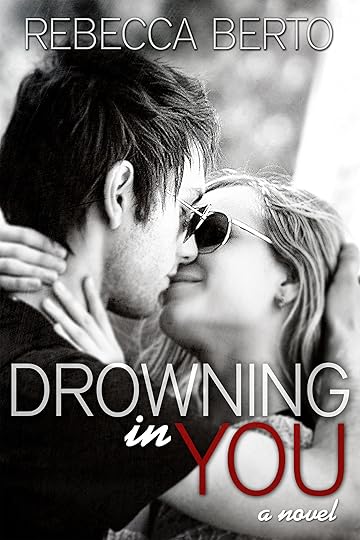
Today, I have author, PC Zick to chat on Novel Girl on writing, her books, and her tips for writers and self-publishers.
PC Zick is the author of three books, and a range of genres: literary fiction, women's fiction and stories about environmental issues.
♥♥♥
What is your favorite time to write?
I love to write first thing in the morning with my first cup of coffee at my side.
Gratitude to Rebecca Berto and her Novel Girl blog for interviewing me.
Writing Rules – Simple and True
When I taught high school English, I always had at least one student – usually a female – who concentrated more on her presentation than the substance of her work. When the term paper was due, I’d receive a beautiful folder with lots of clip art designs on the cover. I might even get a plate of food representing something from the topic of the paper. Instead of working on the substance, this type of student hopes to wow with “pretty.”
I usually took the paper out of the folder so I could actually read it and comment. I tossed aside the accoutrements to find the meat. Most of the time, I found large fonts in 14 point size.
It wouldn’t have taken much more effort to actually write the paper.
With the advent of easy book publishing programs, anyone can write a book and make it pretty on the outside. And many do. Maybe they’ll sell a few books that way and fool some people for a short period of time. But for lasting effects and success as an author, substance and technique are required. There are the exceptions, of course, and I’m not going to give them further publicity by publishing names and titles. I predict those who find easy success will burn out as easily.
For a few minutes today, I’m going to put on my English teacher cap and tell you something I told hundreds of students each year: You must know the rules before you break them.
For any of the trailblazers in any art form, they knew the basic standard rules of music composition, architectural design, painting aesthetics, and fashion basics. How else would they know how to skillfully break those rules? Some of the classics of literature, such as The Catcher in the Rye, break all the rules. But I bet J.D. Salinger knew what rules he was breaking, and he deliberately created a main character who broke the rules of society as well.
Some rules are best not to break. I follow the conventional uses of punctuation just because it helps the reader understand meaning. But I do start sentences with conjunctions – but, and, or – for emphasis. I write in sentence fragments, again for emphasis. Short. Strong. Powerful. I know the rules, but I break them with intent. Martin Luther King, Jr., wrote a run-on sentence in his “Letter from Birmingham Jail.” He was writing about the injustices inflicted on African-Americans in this country and telling his audience why he couldn’t be patient and wait. His sentence went on and on listing the injustices, and the sentence itself becomes a metaphor for those injustices that keep going on and on. Brilliant. Memorable.
Do you break any of the rules of grammar?
NOTE: I’m looking for writers – published or not; Indie or not – to feature on Wednesdays in Writing Whims. Author Wednesday will include guest posts and interviews with authors in most genres and at most stages of their career. Please leave me a comment or email me at pczick@verizon.net if you’d like to schedule a feature. On Fridays, I’m going to post book reviews. If it coincides with an author’s post, that’s great, but sometimes I might just review an old favorite, a new release, or the most recent book I’ve read. I’ll still post about writing tips and techniques once a week, but only on Monday.






